Cold Chain Logistics: Management Challenges & Solutions
The supply chain is a term used to describe all the components required to transport goods from beginning to end, from production to the end...
12 min read
 BUKU Marketing
:
Jul 12, 2023 1:00:00 PM
BUKU Marketing
:
Jul 12, 2023 1:00:00 PM
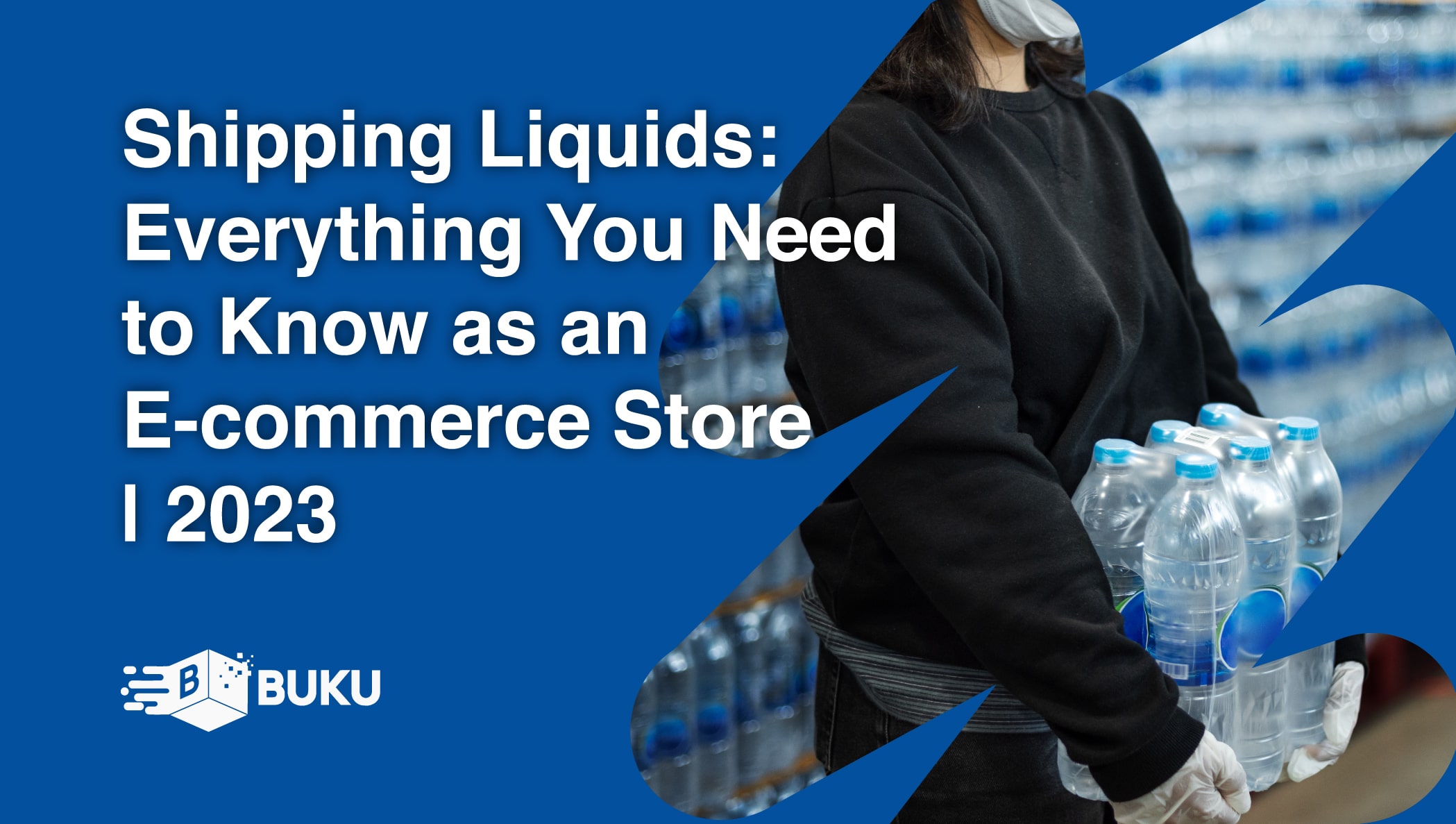
Shipping anything can be a tricky process. Especially when it comes to shipping liquids. Regarding eCommerce, a product must arrive to the customer in the same condition it’s in when it leaves a facility. And there are a lot of outside factors that can threaten that quality, like temperature and pressure.
Table of Contents
1. Packaging & Container Selection
3. Labeling & Documentation For Shipping Liquids
4. Packaging Techniques For Leak Prevention
5. Fulfillment & Shipping Procedures
6. International Shipping Considerations For Liquids
7. Insurance, Liability & Protection
8. Compliance With Regulatory Standards
9. Other Tips For Regulatory Compliance When Shipping Liquids
10. Communication With Customers
The properties of liquids themselves, such as viscosity, surface tension, and foaming, can all affect the quality of that product when it arrives at its destination.
It’s also important to consider the different types of liquids a business may need to ship. Not all fluids are created equal. For instance, perishable liquids like beverages, other consumables, and even liquid soaps are typically permitted if packaged correctly.
However, flammable liquids, chemicals, and other hazardous liquids face additional rules and restrictions. And the types of items that fall into this category may surprise you.
Some rules and regulations come into play when shipping liquids, both from governmental and regulatory agencies and shipping carriers. Failure to follow these rules means a shipment could risk being flagged for non-compliance.
The result could be a shipment that never arrives to the customer or end up costing the business in fines or penalties. Either way, the outcome for a business is not great.
With so many factors to consider, some businesses worry about the risk versus reward of shipping liquids. But you can sell and ship liquids successfully with some knowledge and planning.
This article is a guide that covers everything you need to know about shipping liquids as an eCommerce store.
We start at the beginning of the shipping process, and that's the packaging. Before you can ship any item, you will need to choose the most appropriate packaging. When shipping liquids, choosing means considering several factors related to the properties of the drink itself.
For instance, you should consider the type of liquid, the desired shelf life, the target market, and the liquid’s intended use. Considering these factors before deciding on a kind of packaging can help to both ensure the safety of shipping and the quality of the product after it arrives to the customer, as well as the appeal to that customer.
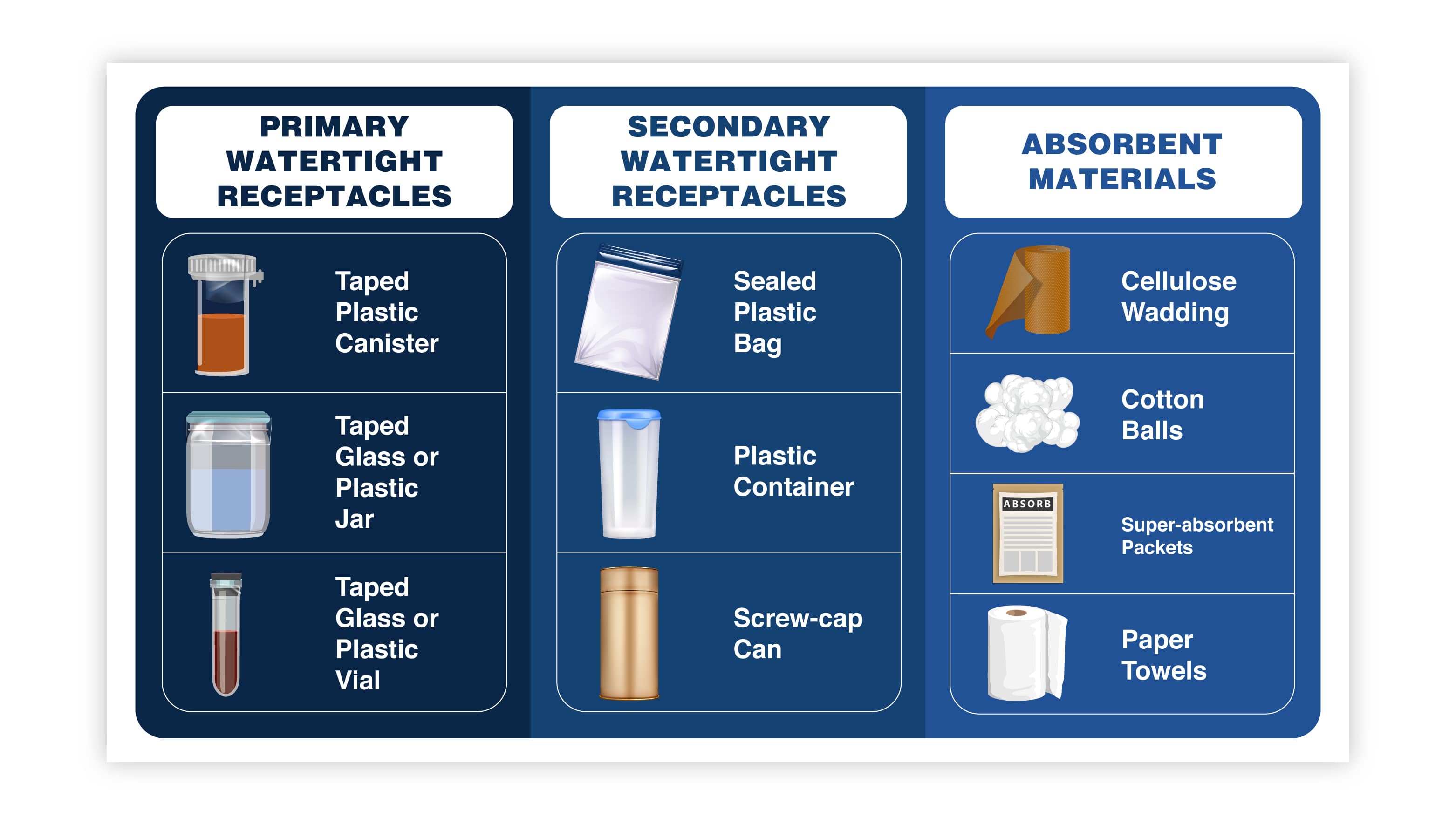
Viscosity – The viscosity of a liquid refers to its fluidity or consistency. Certain outside factors can affect the viscosity, and therefore the quality, of the liquid in question, making it either thinner or thicker.
Temperature – The temperature at which a liquid is packaged, stored, and transported can change the properties of the liquid itself, affecting the quality and shelf-life. This is especially true of perishable products. Temperature is also critical when dealing with flammable liquids.
Particulates – Particulates are microscopic particles present in the liquid itself. Particulates can affect the choice of machinery used in the bottling process and the packaging choice because both the liquid and the particulates must transfer seamlessly into the package.
Considering these factors, plus the preferences of your target market, can help you choose the right packaging type and size for the liquid. Liquid packaging can come in tiny bottles up to large drums or totes.
You must also consider the material of the packaging container. Certain chemicals and hazardous materials will require a specific packaging material, and others may benefit from packaging that protects the product from light and temperature variations.

Some common packaging materials include:
Each shipping carrier has its own list of specific guidelines for shipping liquids. This includes requirements for the packaging itself as well as labeling, documentation, and weight requirements.
FedEx requires the use of watertight containers for liquids, meaning they need a screw-on, snap-on, or push-on lid that is taped closed. They also require individual containers shipped in secondary containers to be individually wrapped or separated to prevent the containers from contacting each other.
Fed-Ex also requires using absorbent material, such as cellulose, absorbent packets, cotton, or paper towels, between primary and secondary receptacles. The material should be able to absorb the entire contents of the liquid containers.
FedEx requires sturdy outer packaging for liquid containers. Examples are corrugated fiberboard, plastic, metal, or wood. The outer packaging must be sized appropriately for the containers. Certain materials, like paperboard, plastic bags, and paper envelopes, are unacceptable for liquid transport.
Lastly, FedEx prohibits shipping liquid containers that exceed 8 gallons or 70 pounds for FedEx Ground and Same Day Delivery. They also have specific guidelines for labeling that must be followed.
The United States Postal Service allows the shipment of nonflammable and non-hazardous liquids if they are sealed using a waterproof container. The packaging must include markings identifying the contents and arrows that distinguish the correct orientation.
Liquids greater than 4 ounces must be triple-packed, meaning the original container should be shipped in a secondary container and padded to avoid leakage or breakage.
The secondary container must also be placed inside a third approved receptacle, such as a Priority Mailbox or USPS Flat Rate Box.
UPS does allow for the shipment of liquids via ground transport but prohibits the shipment of liquids via air. Mostly, their rules and regulations regarding liquid products are like those of FedEx, but they are harder to locate. You can check the UPS website for information regarding what products are considered hazardous and reach out for more information regarding specific guidelines for shipping liquids.
Shipping liquids required both the proper packaging and the correct labeling and documentation. The FAA has a guide you can refer to and follow for information about what labeling and documentation a shipment will require.
Ensuring that a liquid shipment has the correct labeling and documentation is critical if you want the package to arrive safely and on time. This is especially important if you’re shipping internationally because packages without the correct documentation could get stuck in customs.
Labeling is essential to ensure packages arrive in good condition and that package handlers understand what types of precautions they need to take so that the contents of your package aren’t mishandled, damaged, spilled, or exposed to other outside factors like high temperatures or direct sunlight.
We’ve summarized the FAA guidelines below.
Marking refers to a descriptive name, identifying number, instructions, weight, specification, or other marking on the outside of the package. These markings are required for hazardous materials or dangerous goods. Certain items require specific markings denoting them to be radioactive, poisonous, or dangerous.
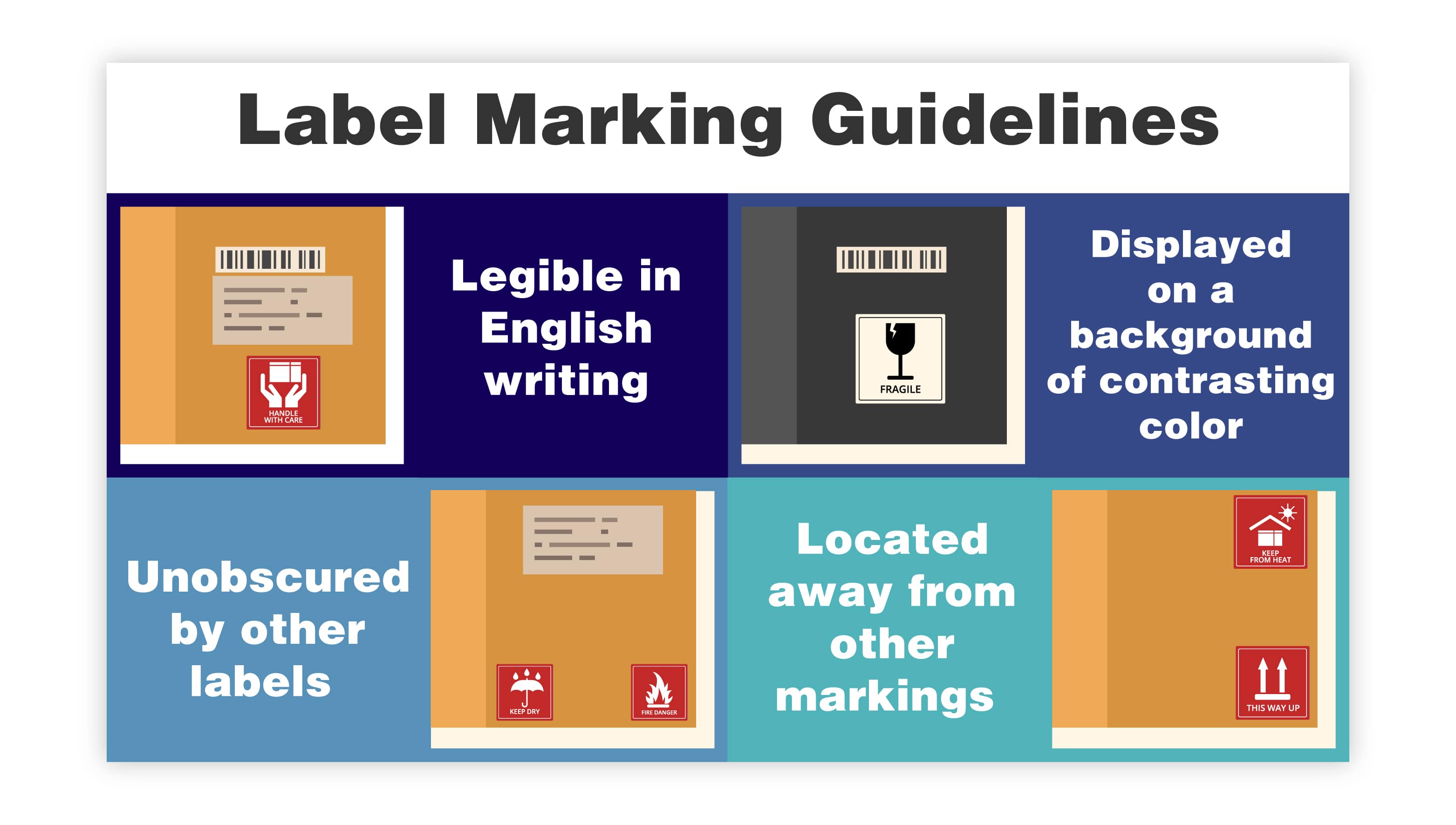
These markings must be:
Labeling is used to identify the specific hazards posed by the materials inside the package. For instance, a flammable liquid requires an explosive label. They must follow the same rules as the markings mentioned above and be affixed to a visible surface of the package where they can be seen.
The documentation required for a particular shipment will vary depending on where the shipment is coming from, where it is headed, and the contents of the package itself. Typically, documentation includes things like records, forms, and certificates specific to the item and information related to the item's description. They also include shipping information like price, quantity, shipping and delivery date, and shipping method. Some examples of these types of documents are:
Shipping liquids safely and effectively requires using the correct packaging materials and techniques. The goal is to get the product to the customer in good quality while simultaneously protecting the people who are transporting it and the environment.
This requires careful consideration of the type of product you are shipping, where it’s going, and how it will get there. Follow these tips when shipping liquids for the best results:
All liquids should be contained within a sealed, waterproof container. Then, that container should be double-sealed for extra protection against spills and leakage during transport. This means adding an additional layer of plastic or tape around the lid of the container to prevent it from opening or leaking.
The double-sealed container should be placed into a sturdy box or receptacle and cushioned with packing peanuts or bubble wrap to avoid damage during transport. The goal is to prevent multiple containers within the package from contacting each other or shifting during transport. You may also be required to use absorbent materials in the packing process to ensure that any spills are contained.
The outer package should be labeled with the appropriate markings and labels identifying the contents of the box. This is especially important when transporting dangerous, flammable, or hazardous materials.
It’s also necessary to let carriers know if a package needs to be kept upright or maintained at a particular temperature or if delivery needs to be completed within a specific time frame, as with perishables. The words “liquid” and “fragile” should be visible on the top or sides of the package.
Fulfillment is receiving and processing a customer’s orders, picking and packing the products, and then shipping them to their destination. It encompasses the entire process from start to finish. There are many different methods of fulfillment that businesses can use—choosing the right one when shipping liquids is essential for a successful outcome.
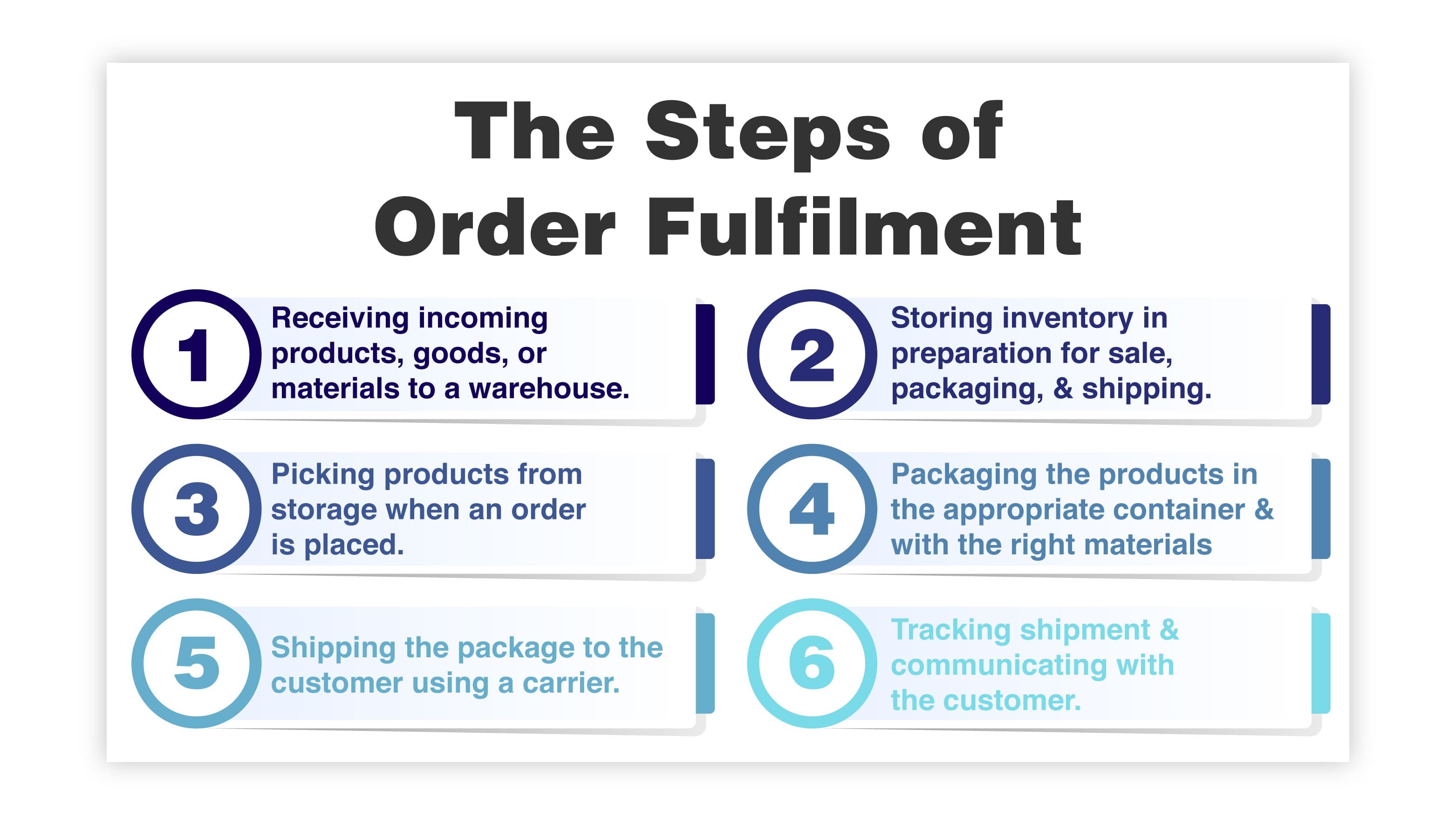
The Steps of Order Fulfillment:
Types of Order Fulfillment
In-House – All processes involved with fulfillment are performed by the business itself. This means picking and packing the products using your own materials, handling the shipping arrangements, and tracking shipments to their destination.
Third-Party – Many businesses, especially those of a larger scale, outsource their fulfillment process to a third-party provider. These 3PLs can perform some or all of the tasks involved with fulfillment. That means less involvement, work, and often costs for the business.
If you need to store, package, and ship liquid products, then choosing a fulfillment method will significantly affect your ability to get the product to the customer successfully. Handling fulfillment in-house can work great for smaller businesses not dealing with a high order volume.
Businesses that require greater space and care for their products during storage may benefit from a 3PL partner. These providers can offer warehousing space, the employees to handle the fulfillment process, and the technology to ensure the job is done correctly.
Want to be connected to a 3PL? Click here for more information
Shipping liquids is challenging, but shipping anything internationally requires extra attention to detail. There are strict rules, regulations, and requirements to ensure the safe transport of goods internationally. Following those rules is the only way to be successful if you’re planning to ship goods across borders or the ocean. Here are some considerations for shipping liquids internationally.
The packaging requirements when shipping liquids internationally may vary depending on the type of liquid you are shipping and the destination. It’s also essential to check into the carrier company's specific requirements and consider what type of transport you are using. Packaging requirements for ground travel may differ from air or ocean travel, for example.
Certain goods and materials are prohibited from import into certain countries, or prohibited from certain kinds of transport, such as via air. Always do your research beforehand to ensure you understand the rules and requirements for each country you are shipping to and what types of products you will be transporting.
Having the proper documentation is essential when shipping internationally. Depending on what you’re shipping, and where the package is headed, the requirements may vary. In general, it’s a good idea to provide as much information as possible.
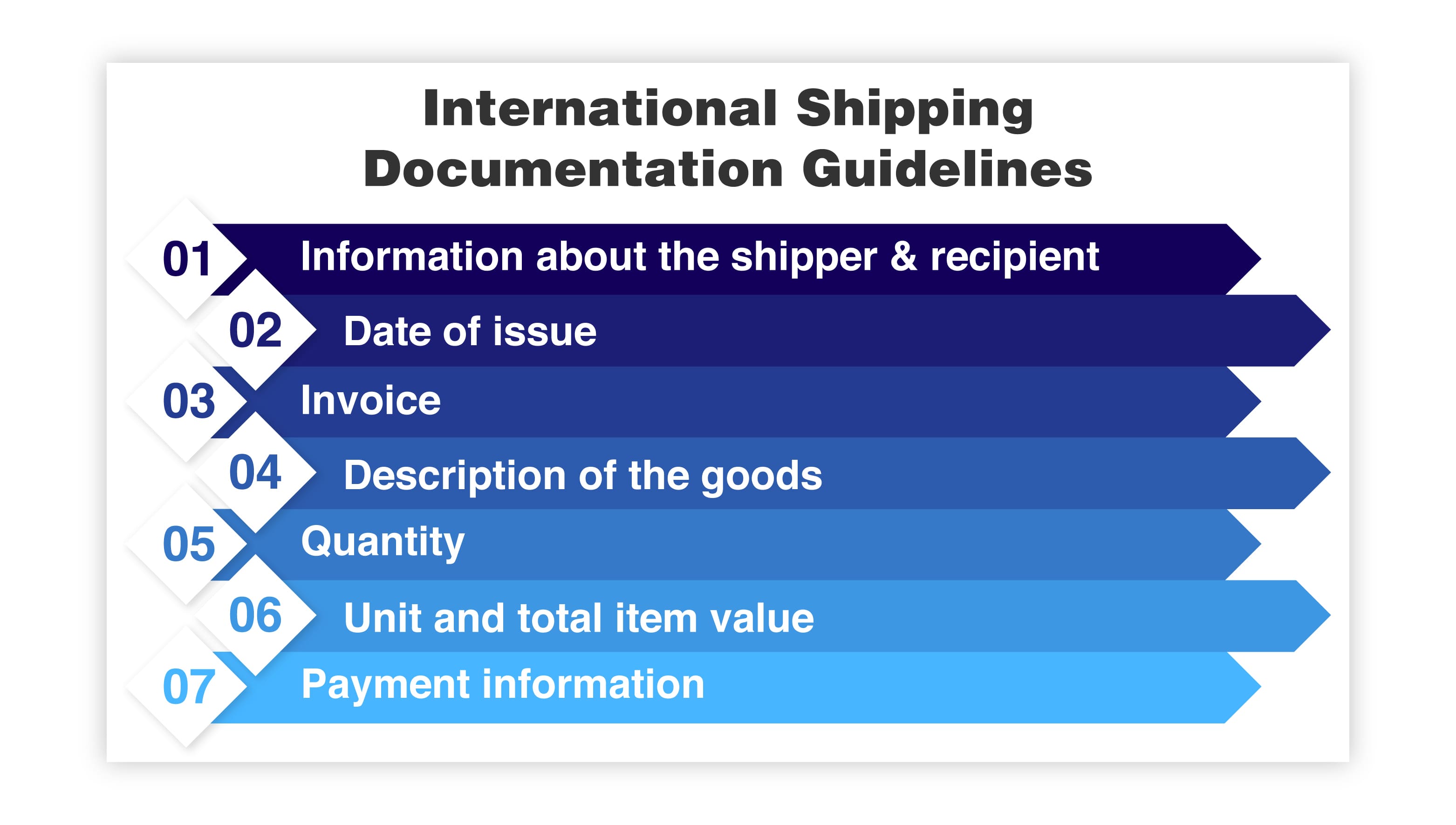
Examples include:
Every country dictates its own rules and regulations regarding imports and exports. Understanding the specific laws related to the country you are shipping to is vital. Otherwise, you risk your products being held up in customs and never reaching their destination. Using the right shipping software can help you understand exactly what the cost of shipping internationally will be, including the cost of customs.
Shipping insurance or protection is an excellent idea for any business that needs to ship goods to customers. Both protect businesses from losses resulting from lost, damaged, or stolen packages. There are many different types of shipping insurances and protection that you can purchase from a variety of companies. BUKU is proud to offer amazing package protection to brands wanting to increase customer loyalty and correctly respond to lost, stolen or damaged products.
According to UPS Capital, 51% of small and medium-sized businesses list financial losses due to shipping replacement products as a top challenge. Even more critical for businesses, 38% of consumers are likely to blame the company they purchased from for shipping issues rather than blame the carrier company.
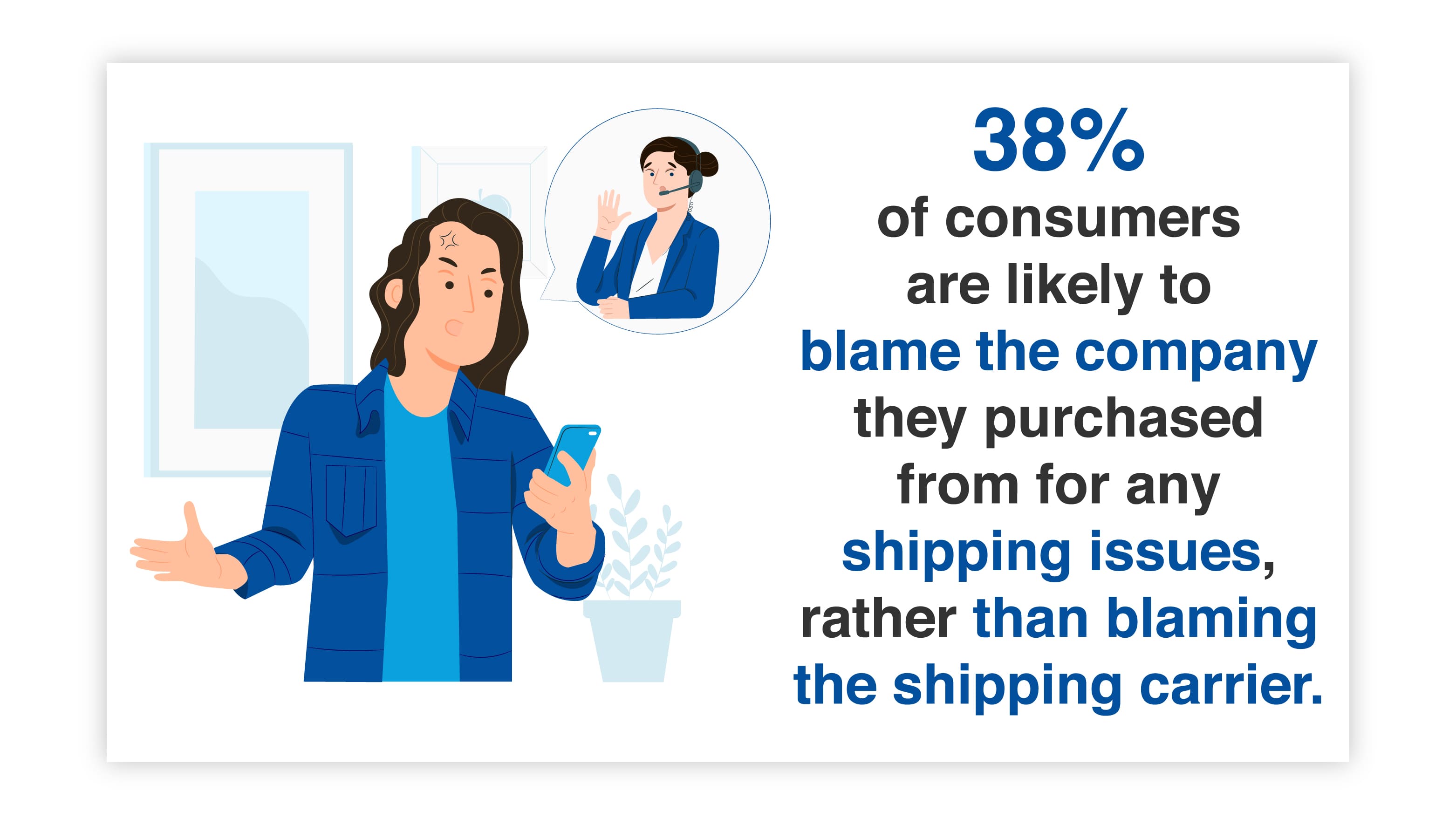
The cost of shipping insurance or protection will vary depending on the value of the goods being shipped, the carrier being used, and how far the package must travel. If you want to learn more about BUKU's shipping protection program or get set up today, click here!
Liquid products are susceptible to damage during shipping, such as leakage, breakage, or spoilage in the case of perishable items. Environmental factors can cause unavoidable delays during shipping, meaning goods are left sitting for prolonged periods.
Exposure to extreme temperatures is also a risk. All these things mean a heightened potential for losses when shipping liquids.
Shipping protection
In 2021 the US saw 210 million packages stolen from porches and more lost along the way. With Package Protection solve this problem before it occurs.
After purchasing from a brand the customer enters into the post checkout phase of their experience with the brand. A great way to offer a fulfilling and simplified experience is by providing package protection. Package protection give you and the customer assuring that no matter what happens during delivery they will get their package.
One of the most critical considerations when shipping any product, especially when shipping liquids, is following all regulatory standards and regulations. Failure to do so can mean facing fines, penalties, and other sanctions – and of course, unhappy customers.
Regulations can vary greatly depending on several factors. From an export and import standpoint, the country in question may have different rules that businesses must follow. Even individual industries can have different directions depending on what types of products they deal with. And every carrier has its own list of standard requirements when it comes to shipping, packaging, and labeling goods for transport.
The best advice when following these rules and regulations is to do your research beforehand. Look into the specific laws, rules, and regulations for each country you plan to do business with and each carrier you plan on using. Consider things like:
Aside from the documentation required to ship packages, businesses should keep extensive and detailed records regarding every shipment. This protects a business from potential liability and litigation in the event of a problem arising and shows that the company has done its due diligence.
Many additional rules and regulations apply when shipping chemicals, pharmaceuticals, flammable products, or any product that could be considered hazardous. Other restrictions also apply when shipping items meant for human consumption.
Shipping liquid goods puts a business at risk of losses from damaged goods during shipment. It also opens them up to face steep fines and penalties if the laws and regulations are not followed. It also makes the company liable for any harm caused by those products. Take precautions to ensure every package is safely transported.
It’s important to remember that the customer is still the most critical component of eCommerce shipping. A business can take every precaution to ensure they’re doing things right and are complying with all the rules and regulations. Still, if the customer isn’t satisfied and happy at the end of the process, nothing else will matter.
According to statistics, 50% of online consumers abandon their carts because of high costs, and shipping costs contribute to that percentage. If a customer expects to spend a certain amount and then get sticker shock at the end because of hidden fees, they’re not likely to continue the transaction, and even less likely to shop with that company ever again.
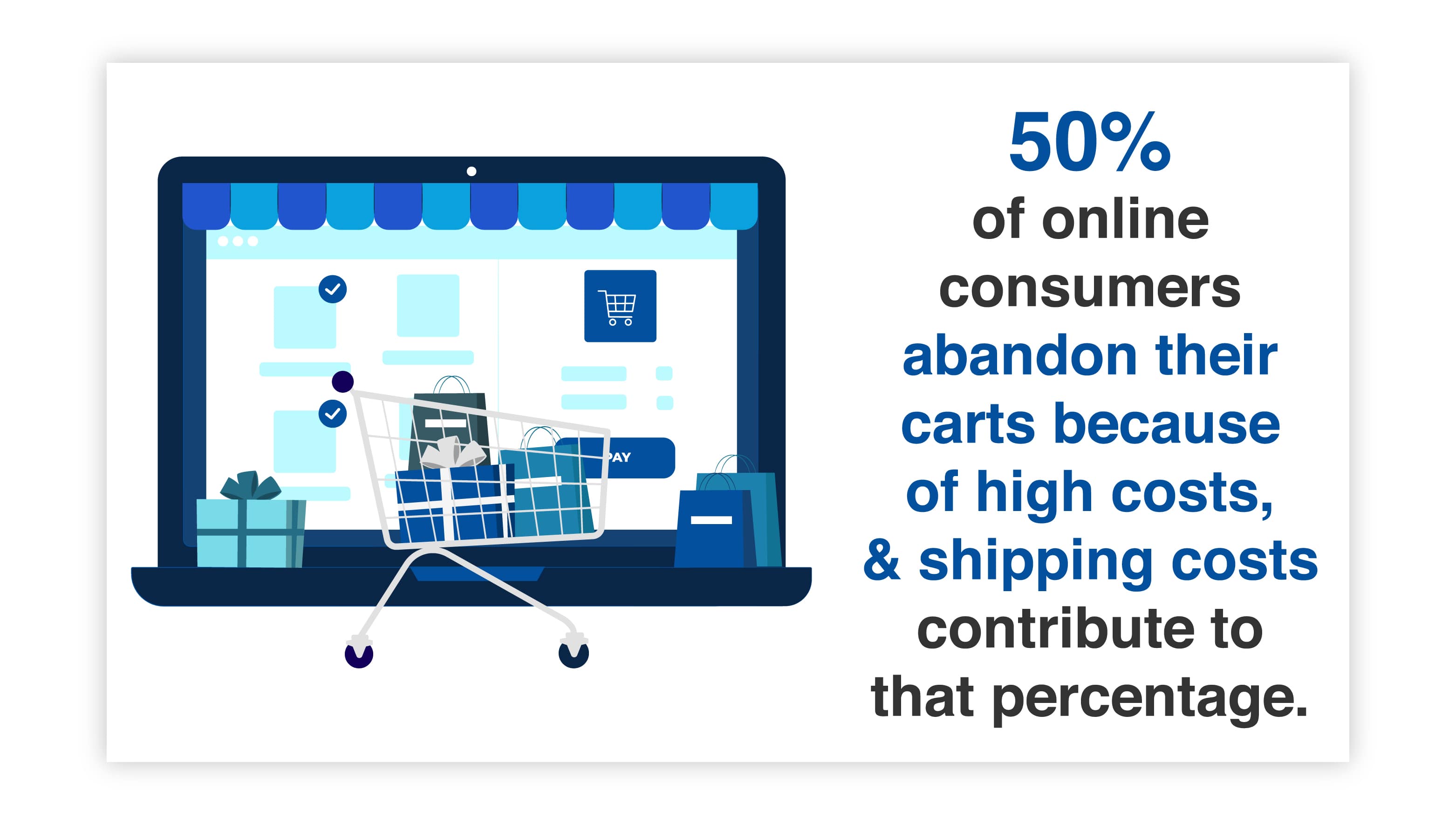
What’s the lesson here? Simply that, communication with the customer is one of the most important aspects of a successful business. The same holds for shipping liquids, or any product for that matter. The customers want to know exactly what to expect and when to expect it.
They won’t forgive a business for situations that arise that delay a package from arriving, even if those situations are out of your hands– but especially if that business doesn’t try to communicate changes with them throughout the process. Here are some tips on how to do it effectively:
Shipping isn’t just about getting products to a customer on time and in good condition. Sometimes, it involves handling returns and exchanges. When shipping liquids, setting clear expectations for the customer is vital.
Executing a good return or exchange policy starts before the sale is even made. It requires creating a concise approach that customers can quickly locate and understand. That way, there will be no misunderstandings on the part of the customer when it comes to what is acceptable and what is not. Follow these tips when crafting a return policy for your business.
The answer to this question is this: a return policy should be easy to find and read. That means making the return policy evident on the product page so the customer can read it before deciding to purchase. It means displaying it again on the checkout page.
And lastly, it means posting it somewhere easily accessible on the website for easy searching. Ensuring the customer has seen the return policy prevents them from claiming they were not provided with the details, and it makes for a happier customer.
Secondly, make sure the language you use in the return policy is straight to the point. Don't use flowery language or overly legal terms that the customer may not understand. Make it as easy to read and understand as possible so there will be no misunderstandings.
Shipping products for an eCommerce business can be a challenge. Shipping liquids can be a tough challenge. But it's not impossible to run a business that deals with liquid products, satisfies the customer, and makes a profit without losing your mind in the process.
Following the examples and tips in this blog can help you figure out how to ship liquids safely and efficiently. In the end, it all comes down to doing your research beforehand. Knowing the rules and regulations will help you make the best decisions regarding shipping for your eCommerce business. Choosing the right technology and partners will also make life a lot easier.
And of course, remember to put the customer at the center of any process. The goal should be to end up with a satisfied and happy customer who is excited to do business with you again.

The supply chain is a term used to describe all the components required to transport goods from beginning to end, from production to the end...

A smart warehouse is a large building where raw materials and other consumer goods are stored using machines, computers, comprehensive software, and...

Direct-to-consumer (DTC) fulfillment is a strategy that helps brands sell and deliver their products directly to customers more efficiently while...